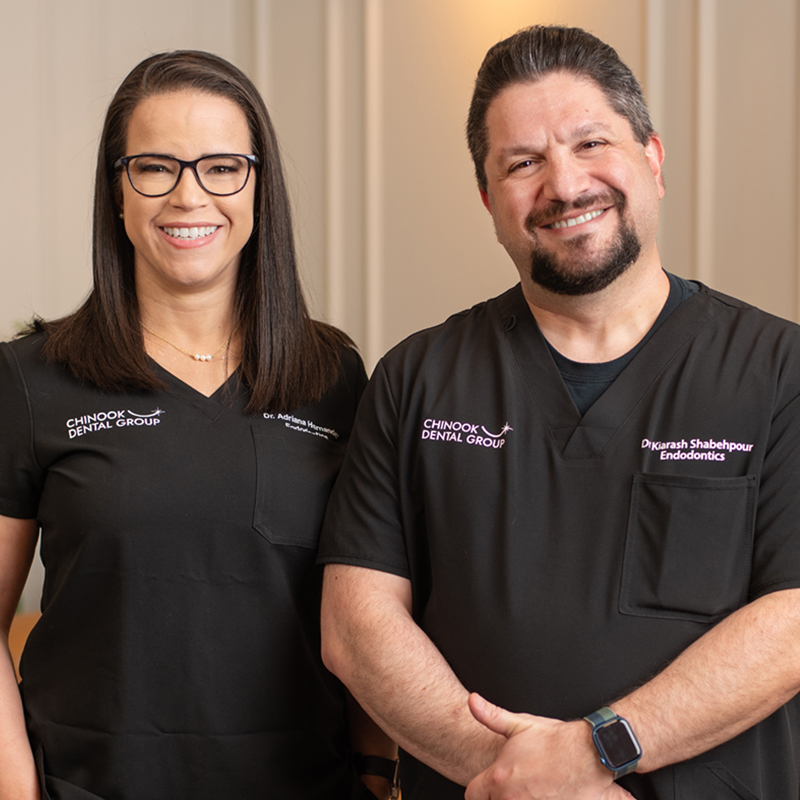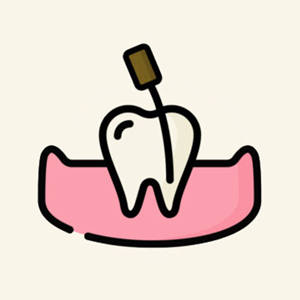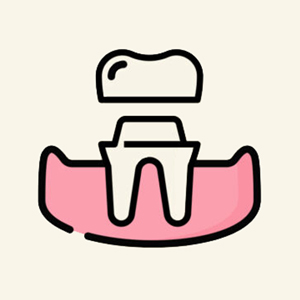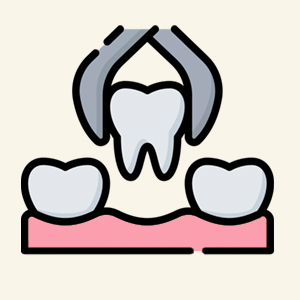Why Choose Chinook Dental Group?
Four Dental Specialties
Receive comprehensive care for four dental specialties.
Appointments Available
Receive timely care and schedule immediate appointments.
We Follow the ADA Fee Guide
We proudly follow the ADA Fee Guide to provide competitively priced services.
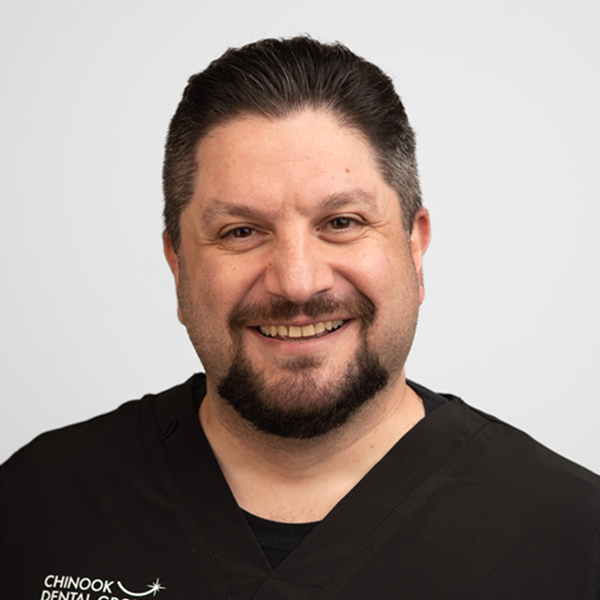
Dr. Kiarash Shabehpour
Dr. Kiarash Shabehpour (or Dr. Kia as his patients and colleagues tend to call him) is a Certified Specialist in Endodontics. He finished his specialist training at the University of British Columbia, where he is currently a clinical instructor helping with training of the next generation of Endodontists.
Dr. Shabehpour practices in both Alberta and British Columbia and along with his team, helps his patients and colleagues with root canal related procedures on a referral basis. He is fluent in both English and Farsi.
When not working, he loves spending time with his family, indulges in martial arts of Judo or can be found on the slopes, skiing.
Dr. Shabehpour is proud supporter of animal rescue groups worldwide.

Dr. Adriana Hernandez
Dr. Adriana Hernandez obtained her BDS degree in Venezuela in 2005. Following several years of successful practice as a general dentist, she decided to further her expertise by specializing in Endodontics. Her journey as a specialist in Endodontics allowed her to serve the dental community in Venezuela with high skill and dedication for several years.
Later on, Dr. Hernandez, along with her husband and three children, relocated to Canada. In Canada, she pursued additional dental education at the University of British Columbia, where she earned certification for her specialty degree. Today, Dr. Hernandez primarily assists patients and colleagues with root canal treatments and endodontic surgeries on a referral basis. She is fluent in English and Spanish.
Root Canal Treatment
A root canal is a treatment done on a tooth with an infection. It involves cleaning the tooth canals, eliminating bacteria, and sealing the tooth to prevent reinfection. If you are experiencing severe toothache, pus on the gums or gumboil, or if you have large tooth decay, it is best to talk to your dentist so they can assess if a root canal is best for you.
At Chinook Dental Group, we offer specialty services in endodontics, including root canal in Calgary. With the advancements in endodontic therapy available in our dental office, you can expect a relatively pain-free experience and a healthier and happier smile after your procedure.
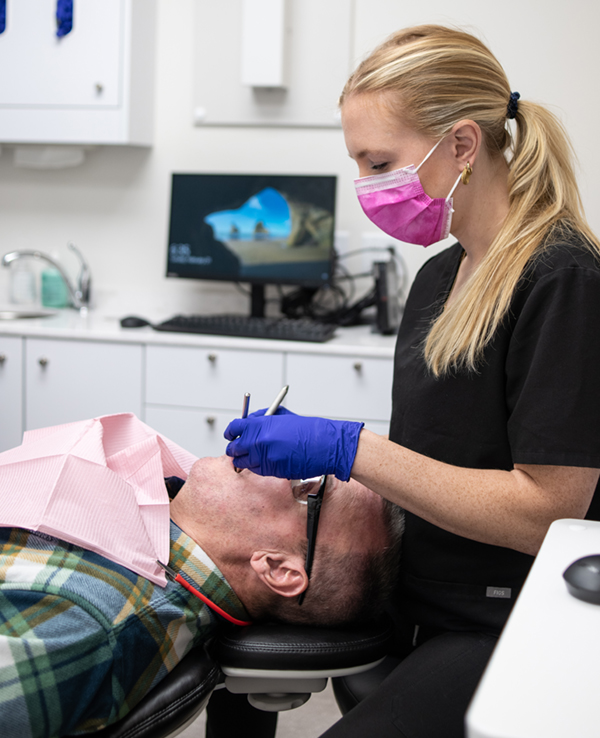
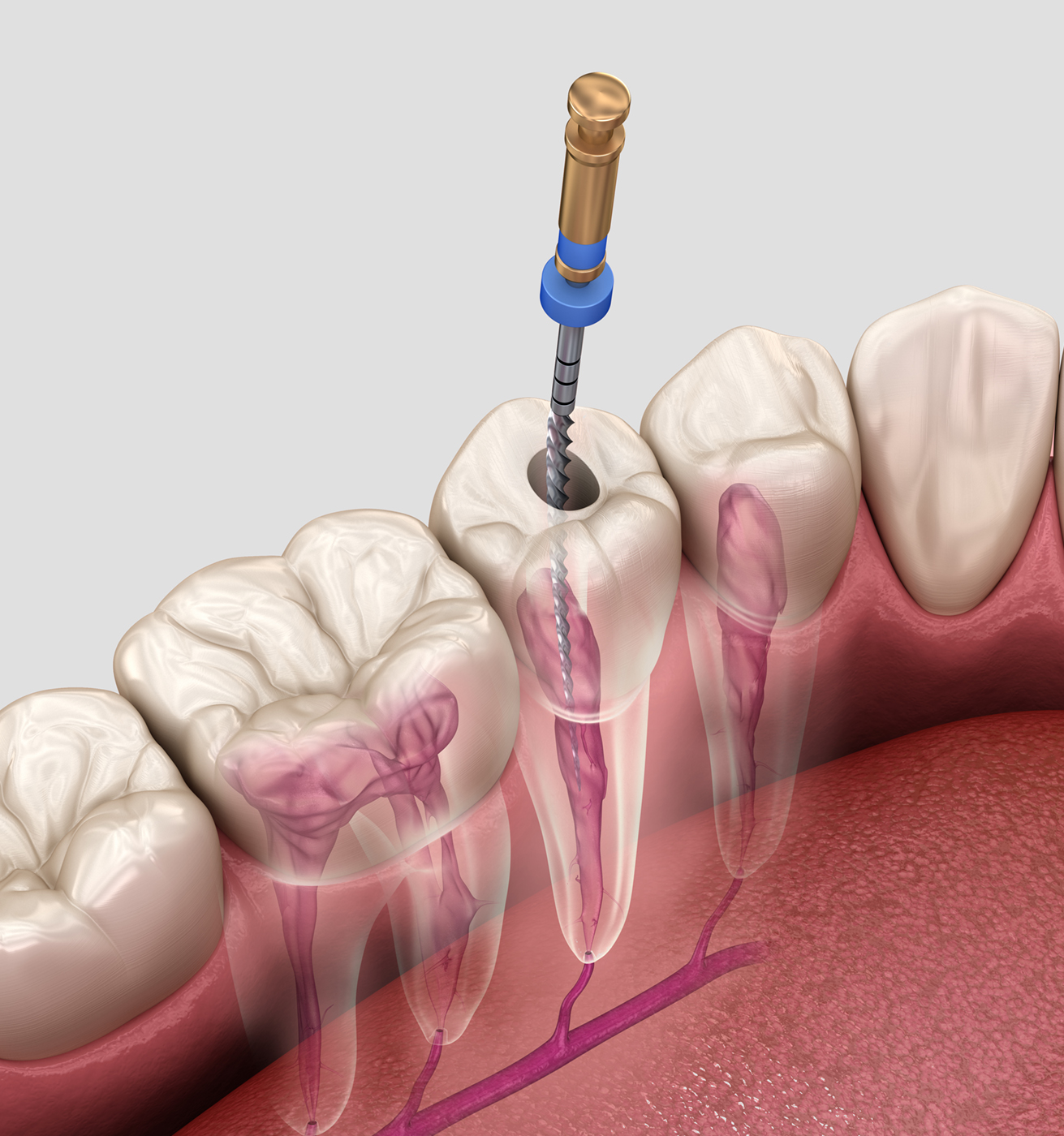
Root Canal Signs and Symptoms
A common telltale sign that you may need a root canal is if you have severe tooth pain that does not go away. This can mean that bacteria has invaded the tooth and the infection is already starting to spread to affect the nerves of your tooth. Widespread infection can lead to pain in your jaw, face, and other teeth.
Aside from pain, other signs and symptoms of an infected tooth that needs a root canal are:
- Pressure hurts – If your tooth hurts whenever you bite or eat something, it can mean that the nerves around the pulp are affected. There may also be pain when biting or chewing due to pressure on the tooth.
- Discoloured tooth – an infection of the tooth pulp prevents the tooth from getting nutrients and blood. This may make your tooth turn dark.
- Loose tooth – if the infection has spread to the bones surrounding the tooth, it may actually break down or soften the bone. Because of this, your tooth may feel loose.
- Swollen gums – dental infection does not only affect the tooth. If left untreated, the gums may also be affected. This can cause inflammation and redness of the gums that may bleed easily.
- Pimple on the gums – the build-up of bacteria in an infected tooth may cause the gums to swell. This results in a gumboil filled with smelly pus that may ooze out if poked. Draining the pus should be done to prevent further swelling.
- Face and jaw swelling – if the pus from the infected tooth is not treated early, it may cause swelling of the face and the jaws. Serious complications may also cause breathing difficulties.
- Fever – more severe infections can cause systemic symptoms such as fever and even swollen lymph nodes. This can be accompanied by significant facial swelling. Urgent treatment is important to prevent serious health concerns.
Benefits of Root Canal Treatment
A successful root canal treatment offers several long-term benefits in the improvement and maintenance of oral health. The main benefit is keeping your natural tooth.
If your diseased tooth is left to rot and decay for a long time, an extraction will definitely be recommended. Tooth extraction has several consequences including teeth spacing and bite problems. You will also have to spend more to have the tooth replaced, which can include getting a bridge or tooth implant.
But with a root canal treated tooth, your dentist can effectively save your tooth and help you keep a healthy and happy smile for many years.
Other benefits of root canal treatment are:
- Stops the spread of infection
- Eliminates existing pain or sensitivity
- Improves the appearance of your tooth
- Saves your natural smile
- Prevents problems involving a missing tooth
- Enhances your overall health
The Root Canal Procedure
The root canal treatment involves a series of procedures targeted to eliminate bacteria, prevent reinfection, and restore the natural appearance of the tooth. If you are looking to get a root canal treatment soon, here’s a short guide to what you should expect:
- Assessing the tooth: X-rays and other diagnostic tests are a crucial part of your treatment. This is completed before the root canal procedure. A comprehensive diagnosis helps your dentist determine the severity of the infection and the best treatment plan to save your tooth.
- Cleaning the canals: Then, bacteria and pus are removed using dental files that go into the canal. This part of the treatment aims to remove inflamed pulp, clear up root canal infection, and eliminate all bacteria in the root canal.
- Placing canal medication: Sometimes, a large infection on the tooth may need canal medication to treat the infection better. This will be placed inside the canal to directly remedy the tooth infection. If a medication is placed, your dentist may ask you to come back after a few days so they can check your progress. This is a crucial step as it improves the long-term success of the treatment.
- Filling the tooth: When bacteria are cleared out, the next step is to seal the canal and fill the tooth. This will prevent bacteria from going inside the canals and causing problems down the road.
- Restoring the tooth: Lastly, the tooth may be restored with a filling, inlay or onlay, or a crown. This will be evaluated depending on the amount of natural tooth left. Ideally, a root canal tooth should have a crown placed on top for protection. A dental crown also provides extra strength for daily functions such as biting or chewing.
If there is widespread infection, some additional steps are required to minimize the swelling in the affected areas. This may include antibiotic therapy or pus drainage depending on the severity of your signs and symptoms.
Recovery After Root Canal
Your tooth and gums go through a lot during the root canal treatment. You can help improve healing time by:
- Practicing good oral hygiene.
- Eating soft foods for the first few days of recovery.
- Avoid using the root canal treated tooth until a permanent tooth crown is placed.
- Taking a break from smoking.
- Using an antibacterial mouthwash for a whole mouth clean.
Generally, the main goal of a root canal treatment is to restore the health, structure, and appearance of the tooth so it can function normally. After a few days of recovery, you should be able to use it to smile, bite, and chew comfortably.
Alternative Treatment Options
Root canal therapy remains the standard of care for treating an infected tooth. But in some suitable cases, your dentist may recommend other endodontic procedures such as pulp capping or apicoectomy.
Direct pulp capping may be ideal for your case if there is accidental exposure of the pulp of the tooth during dental treatment. Your dentist will place a medicated material over the exposed pulp to promote repair. Then, the tooth is filled to help it recover.
Meanwhile, apicoectomy or root end surgery involves removing the tip of the tooth where the infection is. This is mostly recommended for patients with a previously failed root canal procedure and a traditional root canal retreatment is not possible.
Overall, it is always best to check with your dentist to determine the best way to save your tooth.


